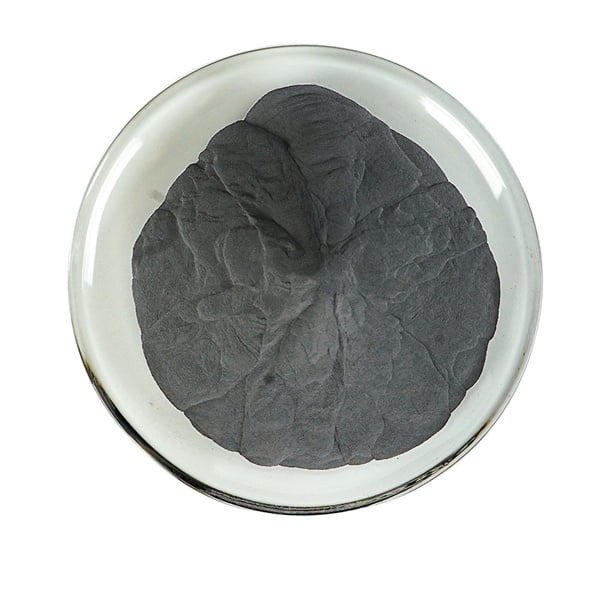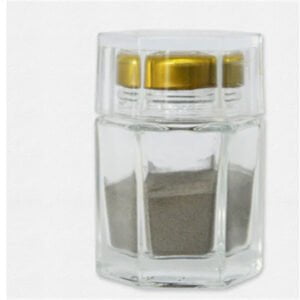Zařízení pro rozprašování plynu
Obsah
zařízení pro rozprašování plynu vyrábí jemné sférické kovové prášky s řízenou distribucí velikosti částic, které jsou důležité pro aplikace AM, tepelného nástřiku, MIM a další aplikace práškové metalurgie. Tato příručka se zabývá principy procesu, typy atomizátorů, součástmi systému, provozními parametry, výrobci a srovnávacím hodnocením.
zařízení pro rozprašování plynu Přehled procesů
Plynová atomizace využívá kinetickou energii vysokorychlostních proudů plynu k rozpadu proudů roztaveného kovu na jemné kapičky rychle tuhnoucí v prášek:
| Princip | Rozbití proudu kovu na jemné kapičky nárazem plynu |
| Typy plynu | Dusík, argon |
| Typy kovů | Slitiny niklu, železa a kobaltu |
| Váhy | Laboratorní, pilotní, průmyslové |
| Vlastnosti prášku | Řízená PSD, vysoká sféricita, rovnoměrnost chemického složení povrchu |
| Velikost částic | 3 mikrony až 120 mikronů |
| produkty | Práškové slitiny, hlavní slitiny |
| Odvětví | Metal AM, MIM, povlaky |
Plynem rozprašované prášky nabízejí přesnou kontrolu vlastností, ale vyžadují vyšší kapitálové investice než jiné techniky rozprašování.

zařízení pro rozprašování plynu Typy
| Rozprašovač | Podrobnosti |
|---|---|
| Těsné spojení | Integrace trysek a plynu umožňuje výrobu velmi jemných prášků o velikosti 20 mikronů. |
| Volný pád | Proud roztaveného kovu propadá plynovou komorou pro provoz bez podpory |
| Rotary | Spolehlivý výkon pro vysoce legované oceli prostřednictvím rotujících kovových licích trubek |
Vznikající návrhy
Rozprašování s více tryskami a odstředivé rozprašovače zvyšují produktivitu. Ultrazvuková atomizace a elektrodové indukční plynové atomizátory zjednodušují výrobu prášku s volným pádem.
Součásti systému
Klíčové moduly kompletních systémů průmyslové atomizace plynu zahrnují:
| Komponent | Role |
|---|---|
| Tavicí pec | Indukční tavení kovů do stavu přehřátí |
| Sestava trysek | Řídí vstřikování proudu roztaveného kovu do plynové komory |
| Řízení plynu | Reguluje typ plynu, tlak a dynamiku proudění. |
| Tuhnutí kapek | Rychlé ochlazení přemění kapky na prášek |
| Systém sběru | Sítování odděluje prášek podle velikosti částic |
| Pytlová hala | Zachycuje ultrajemné ztuhlé částice z výfukových plynů. |
| Recyklace | Znovu zavádí nevyužitý plyn a nadměrné částice. |
Přesné monitorování a těsně integrovaná zpětná vazba mezi výše uvedenými moduly jsou rozhodující pro konzistentní kvalitu prášku.
Parametry procesu
| Parametr | Typický rozsah | Dopad |
|---|---|---|
| Teplota kovu | 30-100 °C přehřátí | Tekutost, oxidace povrchu |
| Velikost otvoru trysky | 2-6 mm | Velikost kapek, dynamika proudění |
| Typ plynu | N2, Ar | Rychlost chlazení, chemie povrchu |
| Tlak plynu | 5-15 barg | Distribuce velikosti částic |
| Průtok plynu | 0,1-3 m3/min | Účinnost atomizace a výtěžnost |
| Výška pádu | 2-10m | Doba tuhnutí a vlastnosti prášku |
Vzájemně závislé vztahy mezi těmito parametry vyžadují empirickou optimalizaci řízenou výpočetními modely, aby bylo dosaženo požadavků na prášek.
zařízení pro rozprašování plynu Dodavatelé
| Společnost | Rozsah kapacity | Odhad nákladů |
|---|---|---|
| AP&C | 10 kg/hod - 300 kg/hod | $750,000-$4 milionů |
| PSI | 25 kg/hod - 500 kg/hod | $950,000-$6 milionů |
| Gasbarre | 50 kg/hod - 1000 kg/hod | $1,2 milionu - $8 milionů |
| Buhler Group | 500 kg/hod - 35 000 kg/hod | $6 milionů+ |
Větší rozsah výroby s sebou nese exponenciálně vyšší ceny. Je nutná značná zakázková konstrukce.
Srovnávací hodnocení
| Rozprašovač s úzkou vazbou | Rozprašovač s volným pádem | |
|---|---|---|
| Investiční náklady | Vysoký | Střední |
| Složitost | Vysoká - Integrovaná konstrukce trysky a plynu | Střední - Oddělené součásti |
| Údržba | Náročné - manipulace s celým plavidlem | Jednodušší - modulární díly |
| Produktivita pro jemné prášky | Vyšší | Střední |
| Flexibilita materiálu | Střední - omezeno rizikem ucpání trysky | Vysoká - otevřená architektura |
| Monitorování procesů | Umožňuje přísnou kontrolu procesu | Více se spoléhá na charakterizaci |
Klíčové poznatky
- Precizní konstrukce částic s velkou flexibilitou činí z plynové atomizace výkonnou, ale nákladnou techniku.
- Integrované modelování a monitorování umožňuje výrobu kvalitních prášků s úzkými specifikacemi
- Klíčovým omezením zůstává škálovatelnost u malých, středních a velkých plynových atomizérů.

Nejčastější dotazy
Otázka: Jaká velikost plynových atomizačních systémů je nejvhodnější pro potřeby práškové technologie AM na kovy?
Odpověď: Pro výzkum a vývoj jsou vhodné stolní laboratorní rozprašovače s měřítkem 1-5 kg/hod. Pro komerční výrobu AM kovů jsou vhodné atomizéry o kapacitě 50-200 kg/hod., které vyvažují požadavky na výkon, náklady a kvalitu prášku.
Otázka: Jaký tlak plynu se obvykle používá při atomizaci?
Odpověď: Většina rozprašování plynu se opírá o tlaky 5-12 barg. Vyšší tlaky umožňují jemnější prášky, ale vyžadují těžší nádoby. Argon umožňuje rychlejší odvod tepla než dusík.
Otázka: Jak malých částic může rozprašovač plynu dosáhnout?
Odpověď: Špičkové atomizátory s úzce spojenými tryskami prokázaly konzistentní produkci kovových prášků o velikosti 15-20 mikronů při zachování rozumného procenta výtěžnosti.
Otázka: Které kovy nejsou vhodné pro plynovou atomizaci?
Odpověď: Vysoce reaktivní slitiny, jako je titan a slitiny hliníku, představují problém při oxidaci a hrozí ucpání trysky. Indukční tavení lebky pomáhá tyto problémy zmírnit.
Sdílet na
MET3DP Technology Co., LTD je předním poskytovatelem řešení aditivní výroby se sídlem v Qingdao v Číně. Naše společnost se specializuje na zařízení pro 3D tisk a vysoce výkonné kovové prášky pro průmyslové aplikace.
Dotaz k získání nejlepší ceny a přizpůsobeného řešení pro vaše podnikání!
Související články

Vysoce výkonné segmenty lopatek trysek: Revoluce v účinnosti turbín díky 3D tisku z kovu
Přečtěte si více "O Met3DP
Nedávná aktualizace
Náš produkt
KONTAKTUJTE NÁS
Nějaké otázky? Pošlete nám zprávu hned teď! Po obdržení vaší zprávy obsloužíme vaši žádost s celým týmem.

Kovové prášky pro 3D tisk a aditivní výrobu
SPOLEČNOST
PRODUKT
kontaktní informace
- Město Qingdao, Shandong, Čína
- [email protected]
- [email protected]
- +86 19116340731












